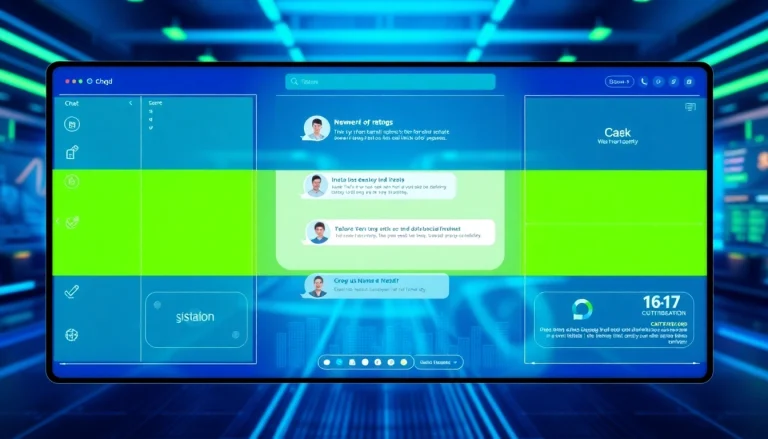Understanding Competitive Intelligence
Definition and Importance
Competitive intelligence (CI) refers to the process of systematically gathering, analyzing, and disseminating information about competitors, market trends, customer behavior, and other business-critical elements. This information is of strategic value and acts as a foundation for making informed business decisions. Given the rapidly evolving marketplace, CI has become an indispensable tool for businesses striving to maintain a competitive edge. In essence, it allows organizations to understand what their competitors are doing, identify market opportunities, and anticipate shifts in consumer preferences.
CI goes beyond mere data collection; it involves a strategic approach to understanding the business landscape. This structured process is crucial for organizations aiming to harness actionable insights that drive their strategic initiatives. According to competitive intelligence experts, the significance of CI lies in its potential to shape a company’s long-term success and fortify its market position.
Key Components of Competitive Intelligence
The components of competitive intelligence can be broadly categorized into several key areas:
- Data Collection: The foundation of CI involves collecting data from various sources, including market reports, competitor websites, and customer feedback.
- Data Analysis: This phase involves analyzing the collected data for patterns, trends, and insights that can inform business strategies.
- Information Dissemination: Once the data has been analyzed, the findings need to be communicated to stakeholders effectively to facilitate informed decision-making.
- Strategic Action: The ultimate goal of CI is to inform strategic decisions and actions that improve an organization’s competitive positioning.
Benefits for Businesses
The advantages of implementing a robust competitive intelligence program are multifaceted:
- Informed Decision Making: CI equips leaders with actionable insights that ensure decisions are data-driven.
- Enhanced Market Understanding: By closely monitoring industry and market dynamics, organizations can respond proactively to changes.
- Improved Strategic Planning: CI facilitates better long-term strategic planning, allowing businesses to set realistic objectives that consider external factors.
- Risk Mitigation: Understanding competitor strategies can help organizations identify potential threats and mitigate risks before they materialize.
Types of Competitive Intelligence
Market Intelligence
Market intelligence focuses on compiling data regarding the dynamics of the market in which a company operates. This includes understanding market size, growth potential, competitor presence, and customer demographics. Gathering accurate market intelligence helps businesses perfectly align their offerings with market demands and identify new market opportunities. Techniques for gathering market intelligence often include surveys, market reports, and social media analysis.
Competitor Analysis
Competitor analysis involves a detailed examination of competitor strategies, strengths, weaknesses, and market performance. This analysis helps organizations identify core differentiators—what sets them apart in the marketplace. It encompasses studying competitors’ marketing strategies, product offerings, pricing frameworks, and customer service approaches. By understanding competitors’ strengths and vulnerabilities, companies can better position themselves in their respective markets.
Customer Insights
Customer insights involve understanding consumer behavior, preferences, and trends. This type of intelligence helps businesses tailor their products and marketing strategies to meet consumer needs effectively. Utilizing methodologies such as customer surveys, focus groups, and behavioral analytics can uncover what drives consumer decisions, enabling organizations to create more compelling value propositions that resonate with their target audience.
Methodologies for Gathering Data
Tools and Technologies
Today, a plethora of tools and technologies are available to assist organizations in gathering competitive intelligence data. Some common tools include:
- Web Scraping Tools: These automate data collection from competitor websites and other online sources, saving time and reducing human error.
- Social Media Monitoring Tools: Platforms like Hootsuite or Sprout Social provide insights into brand mentions, customer sentiment, and competitor activities across social channels.
- Market Research Platforms: Tools such as Statista, Nielsen, and Mintel offer access to extensive market reports and consumer data.
Primary Research Techniques
Primary research involves the collection of firsthand data. Methods can include surveys, interviews, and focus groups focusing on obtaining qualitative insights directly from consumers and industry experts. This data is particularly valuable as it provides specific answers to business queries and helps validate assumptions. Organizations conducting primary research need to ensure their sample sizes are representative of the larger population to produce actionable insights.
Secondary Research and Data Analysis
Secondary research refers to analyzing existing data already published or collected by others. This can include analyzing market studies, industry reports, and academic papers. While secondary research is generally less expensive than primary research, it also requires careful consideration regarding the credibility and relevance of the data sources. Coupled with data analysis techniques, secondary research can unveil strategic insights about competitors and overall market trends.
Implementing Competitive Intelligence Practices
Creating a CI Strategy
Developing a competitive intelligence strategy involves defining the goals and objectives for the CI program. Organizations should determine which aspects of the competitive landscape are most crucial for their business and allocate resources accordingly. A good CI strategy should also detail the methods for gathering data, the types of analysis to be conducted, and the way findings will be disseminated to relevant stakeholders.
Team Roles and Responsibilities
Successful competitive intelligence initiatives require a well-defined team structure. This typically involves assigning roles such as:
- CI Manager: Oversees the CI program’s operations and ensures alignment with organizational goals.
- Data Analysts: Analyze the collected data to extract actionable insights.
- Market Researchers: Focus on gathering market and competitor data through varied research methodologies.
- Stakeholders: Executives and business leaders who make strategic decisions based on CI findings.
Monitoring and Adjustment Processes
CI is not a one-time effort; it necessitates continuous monitoring and adjustment. Companies must regularly update their CI processes to stay ahead of the competition. This involves setting up alerts for competitor activities, routine checks for market developments, and scheduling regular reviews of CI findings to ensure that strategies remain relevant and effective in the face of changing market conditions.
Evaluating the Effectiveness of Competitive Intelligence
Key Performance Indicators
To measure the effectiveness of CI practices, organizations should establish key performance indicators (KPIs). KPIs may include:
- Increased market share
- Enhanced customer retention rates
- Faster response times to market changes
- Successful implementation of strategic initiatives based on CI findings
Regularly reviewing these KPIs will shed light on the impact of CI on business outcomes and allow for strategic adjustments when needed.
Case Studies and Success Stories
Examining case studies of successful competitive intelligence initiatives provides valuable lessons. For instance, a leading technology company revamped its strategic approach after discovering through CI that their competitor’s product was gaining significant market traction due to enhanced user experience features. As a result, they invested in user research and improved their own product’s interface, leading to a measurable increase in market share.
Continuous Improvement Approaches
CI processes should foster a culture of continuous improvement. This can involve regular training for CI teams on the latest tools and techniques, as well as seeking ongoing feedback from stakeholders regarding the relevance and usability of CI findings. Moreover, organizations should remain open to experimenting with new methodologies and refining existing ones to enhance the overall effectiveness of their CI program.








